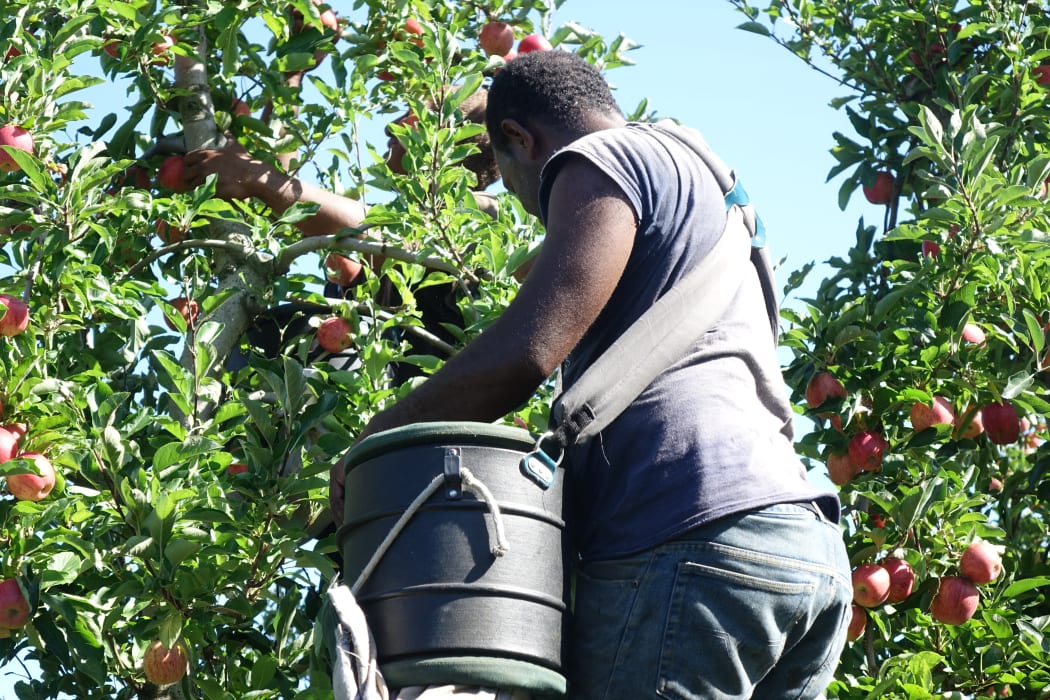The full potential of labour mobility between Australia, New Zealand and the Pacific Islands remains largely untapped, according to a new report from the World Bank and the Australian National University.

A man from Vanuatu works in a Hawke's Bay orchard under the Recognised Seasonal Employer scheme. Photo: RNZI / Johnny Blades
The report - Pacific Possible: Labour Mobility - says if Australia and New Zealand lifted restrictions around seasonal migrant workers, 240,000 more Pacific Islanders could migrate abroad by 2040.
The increased number of workers could generate up to $10 billion of additional income into the islands
The report suggests a large amount of this income would be retained by the workers themselves, however a significant proportion would also be sent home, resulting in up to an additional $800 million in remittances for Pacific nations.
"Increasing labour mobility options for Pacific Islanders has the potential to be transformative, not only for workers and their families, but also for Pacific Island economies," said Jesse Doyle, joint report author and social protection economist at the World Bank.
The report also highlights an increasing need for Pacific workers in labour receiving countries, particularly Australia and New Zealand.
For example, as the aged care sector expands to meet demand on both sides of the Tasman, there will shortages of both residential and community care workers.
The report suggests training and recruiting Pacific Islanders would represent a reliable and economical option to fill this upcoming labour market shortage.
"Given the region's unique characteristics, increasing labour mobility is critical for the future of the Pacific, and would also be of benefit to Australia and New Zealand.
Professor Stephen Howes, joint report author and director of the Development Policy Centre at ANU, said: "The challenge of realising these opportunities falls to all governments of the region - the Pacific Islands to lift education and training standards, and Australia and New Zealand to reduce the constraints for Pacific Islanders wishing to move for work."
The report proposes a number of labour mobility reforms and programs for both sending and receiving countries. Some of its recommendations include:

